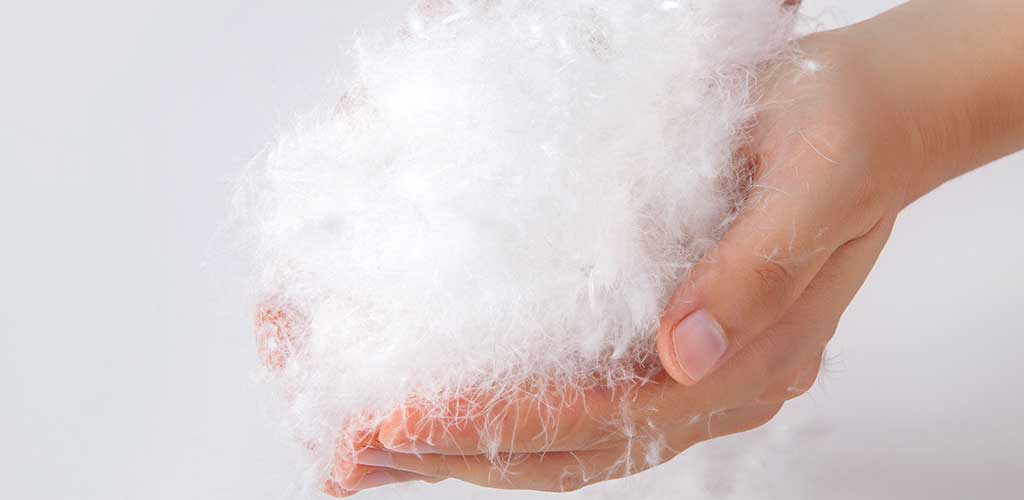
The ceiling guide - which duvet is the right one for me?
The duvet influences the sleeping environment and body temperature at night. Find out here what duvets and filling materials are available and which duvet best suits your sleeping habits.
Table of contents
- A blanket for healthy sleep
- Duvets at a glance
- Summer blankets
- Winter blankets
- All-season blankets
- Duvet fabrics and fillings
- Which blanket is right for me?
- Conclusion
1. A blanket for healthy sleep
Whether light and airy or fluffy and warm – the duvet we use is crucial for our well-being and whether we experience a restful night. The duvet can influence not only the nighttime sleeping climate, but also our body temperature, thus supporting healthy sleep. You can find out why body temperature is so important for healthy sleep. here read more.
The duvet has a direct influence on the surface temperature of the body and the sensation of warmth or cold at night. Which duvet best suits your sleeping habits depends on your personal feeling and your Sleeping environment Some people have a higher heat requirement, some a lower one, while others are more sensitive to temperature fluctuations and therefore quickly begin to sweat or feel cold.
We'll show you the most popular types of duvets and how to find out which duvet is best suited to help you get a completely comfortable night's sleep.
2. Duvets at a glance
Characteristics of a good blanket
A good duvet helps maintain normal body temperature by storing or dissipating radiant body heat at the right intensity. To avoid heat or moisture buildup, you should ensure that your duvet provides neither too little nor too much warmth. It should also be able to absorb any moisture and release it into the room air, preventing it from accumulating beneath the duvet. The material best suited to maintaining these properties should be chosen based on your sleep style and your warmth needs, which can also change over the seasons.
Summer blankets

Also in Summer And when the outside and room temperatures are higher, you should not do without a duvet so that you are protected from cold drafts at night, heat and sweat are wicked away from the skin and a healthy body temperature can be maintained.
Thin summer duvets are ideal here. They are often characterized by their low weight, less filling, and particularly moisture-regulating materials. This means they rest lightly on the body without adding weight, helping to prevent sweating or freezing on hot nights. Popular materials include cotton, high-quality polyester fibers, or thin down fillings.
Winter blankets

Duvets for the colder seasons are usually heavier and contain a lot of filling to provide sufficient warmth and create a cozy, comfortable feeling. Depending on your warmth needs, the duvet should not be too warm or too tight, allowing your body temperature to drop sufficiently and preventing you from sweating at night. Winter duvets are often made of natural materials that have a heat-insulating effect and retain body heat well. These include down feathers, camel hair, or some synthetic fibers.
All-season blanket

An all-season duvet is suitable for use in any season and is especially practical in transitional periods or in bedrooms with little temperature fluctuation. In terms of fill volume and warmth, it usually falls between a summer and winter duvet and is therefore versatile and can be used year-round, meaning that changing the duvet is not necessary with many models.
3. Ceiling fillings at a glance
Each ceiling material has its advantages and disadvantages and should therefore be chosen according to your own needs and preferences.
Feathers & Down

Down is a particularly fine feather, primarily obtained from geese and ducks, and is one of the classic filling materials. Down comforters are generally particularly light, warm, and cozy. They insulate well and are therefore ideal for people with high warmth needs. High-quality down is also very durable, but somewhat more difficult to care for than synthetic fillings, as they are often difficult or impossible to wash. Furthermore, while they absorb moisture well, they are comparatively less effective at wicking it away than other filling materials and are therefore less suitable for sleepers who sweat a lot.
Feathers and down are animal products, and despite strict controls, some down is still obtained from animals kept in poor conditions. Therefore, you should pay particular attention to the origin, quality, and certification of the materials.
Natural & plant fibers

Cotton, cashmere, and camel hair are natural fillings characterized by temperature-regulating properties and effective moisture management. They wick moisture away well and are easier to clean than down. Duvets made from plant fibers are generally easy to wash, and natural fibers like camel hair have some self-cleaning properties, so the duvets only need to be aired out regularly. Natural fillings, on the other hand, are usually somewhat heavier, not quite as warm, and less suitable for allergy sufferers.
Synthetic fabrics

Synthetic fillings are usually made from industrially manufactured polyester fibers, which are relatively lightweight and, depending on the quality, have good temperature and moisture regulating properties. Duvets made from synthetic fibers are generally very suitable for allergy sufferers and are easy to clean. High-quality materials such as Tencel™ or PrimaLoft® Bio™ fiber are also made from natural or recycled raw materials and in environmentally friendly production processes – thus, they do not harm the environment or animal welfare. Some of them feature down-like thermal insulation and, depending on the fill quantity, are suitable for all types of duvets.
4. Which duvet is right for me?
The perfect duvet is as individual as the mattress and the Pillow. The following questions can help you figure out which duvet might be best for you.
The size: How big should my duvet be?
This depends on your body type and personal preference. People who like to snuggle up, toss and turn a lot at night, or want to share the blanket with a partner may want to opt for a larger duvet.
Common sizes: 135x200 cm, 135x220 cm, 155x200 cm, 155x220 cm
The type of blanket: Do I want a blanket for the whole year or do I want to change it depending on the season?
If you don't want to change your duvet throughout the seasons, or if your bedroom's room temperature remains constant, you can opt for a year-round duvet. If your bedroom is very hot in the summer or cooler in the winter, alternating between a summer and winter duvet is recommended.
The filling material: How much heat do I need? Do I need certain properties?
Do you always have cold feet and get cold easily? Or do you tend to sweat in warm temperatures? The amount of warmth you need is an important factor when choosing a filling material. Other properties can also influence the choice of material, such as price, sustainability, or whether the filling is suitable for allergy sufferers.
The right cover: Which duvet cover do I want to use?
To perfectly round off the effect of your duvet, you can also consider which duvet cover suits your sleeping needs. We have an overview and tips on the best bed linens in this article presented.
Best wishes and see you soon!



Leave a comment
This site is protected by hCaptcha and the hCaptcha Privacy Policy and Terms of Service apply.